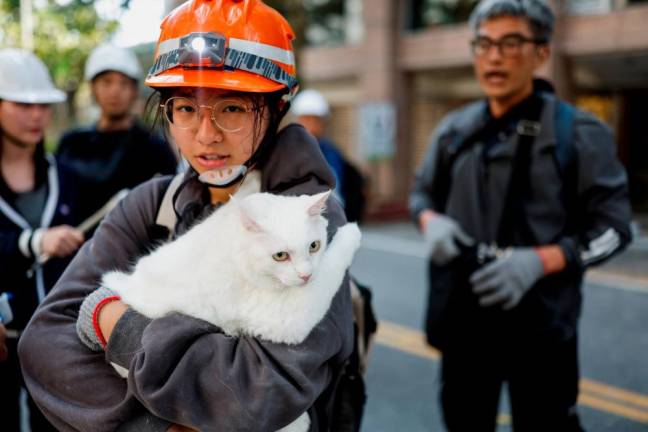WASHINGTON: US consumer prices increased solidly in February amid higher costs for petrol and shelter, suggesting some stickiness in inflation that further diminishes the chances of a Federal Reserve interest rate cut before June.
Despite the second straight month of firmer inflation readings reported by the Labor Department on Tuesday (March 12), the composition of the report remained consistent with a disinflationary trend. Inflation-weary Americans got some relief from their supermarket and medical bills.
Though shelter costs helped to lift prices last month, housing inflation slowed after surging in January. Some economists said difficulties adjusting the data for price increases at the start of the year had injected a bit of “noise” into the Consumer Price Index (CPI) report.
US central bank officials, including Fed chair Jerome Powell, have indicated they are in no rush to start lowering borrowing costs. The stubbornly higher cost of living is one of the key issues in the Nov 5 US presidential election.
“We still believe the disinflation case is intact and that seasonal patterns at the start of the year have pushed inflation higher, but the Fed was looking for greater confidence that inflation was sustainably headed to 2%, and that confidence cannot be found in this report,” said Conrad DeQuadros, senior economic adviser at Brean Capital.
The CPI rose 0.4% last month after climbing 0.3% in January, the Labor Department's Bureau of Labor Statistics (BLS) said. Petrol prices rebounded 3.8% after declining 3.3% in January. Shelter, which includes rents, rose 0.4% after advancing 0.6% in the prior month.
These two categories contributed more than 60% to the monthly increase in the CPI. Food prices were unchanged after rising 0.4% in January amid decreases in the costs of dairy products, fruits and vegetables as well as nonalcoholic beverages. But prices for cereals and bakery products rose while meat, fish and eggs were slightly more expensive.
In the 12 months through February, the CPI increased 3.2%, after advancing 3.1% in January.
Economists polled by Reuters had forecast the CPI would gain 0.4% on the month and increase 3.1% on a year-on-year basis. The annual increase in consumer prices has slowed from a peak of 9.1% in June 2022, but progress has stalled in recent months.
President Joe Biden used the report to drum up support for a US$7.3 trillion (RM34.15 trillion) budget unveiled on Monday. “We have more to do to lower costs and give the middle class a fair shot,” Biden said in a statement. “The budget I put forward yesterday would take on Big Pharma to lower prescription drug costs.”
Financial markets continue to expect the Fed will cut rates in June. Since March 2022, the US central bank has raised its policy rate by 525 basis points to the current 5.25%-5.50% range. Stocks on Wall Street were trading higher on Tuesday. The dollar rose against a basket of currencies. US Treasury prices fell.
Inflation picked up in January, and was largely blamed on the price hikes by service providers at the beginning of the year, which economists said were not fully addressed by the model used by the government to strip out seasonal fluctuations from the data.
There was also a jump in owners' equivalent rent (OER), a measure of the amount homeowners would pay to rent or would earn from renting their property, which diverged from rents. That was partly the result of some methodology changes by the government.
The BLS last week held a webinar to discuss the underlying methodology related to the January OER and rent data.
Excluding the volatile food and energy components, the CPI increased 0.4% in February after rising by the same margin in January. Shelter was also the main driver of the so-called core CPI. Rents increased 0.5% after gaining 0.4% in January.
But OER climbed 0.4% after surging 0.6% in the prior month. The latest data suggested that the divergence between the rents and OER measures, which had raised concerns about the outlook for shelter inflation, was a one-off event.
The cost of healthcare was unchanged after rising 0.5% in the prior month. Hospital services prices decreased 0.6%, but the cost of dental services increased 0.4%. Airline fares accelerated 3.6% while motor vehicle insurance cost 0.9% more.
Services excluding energy increased 0.5% after shooting up 0.7% in January. The rise in the so-called super core services excluding shelter slowed to 0.5% from 0.8% in the prior month.
Goods prices rebounded by 0.4% after falling 0.3% in January. They were boosted by increases in the prices of apparel. Used cars and trucks prices jumped 0.5%.
Core goods prices rose 0.1%, the first increase since last May, after falling 0.3% in January. Economists were split on whether the goods disinflation trend that helped to lower inflation last year had run its course.
“The Fed has said they need services inflation to moderate further in case goods deflation has ended. The February CPI report has this flavour,” said Stephen Juneau, an economist at Bank of America Securities. “We read developments on February inflation as continuing to support our outlook for a rate cut cycle that starts in June.”
In the 12 months through February, the core CPI advanced 3.8%. That was the smallest year-on-year increase since May 2021 and followed a 3.9% rise in January. A separate report from the Atlanta Fed showed its sticky-price CPI, a weighted basket of items that change price relatively slowly, increased 4.0% on an annualized basis in February after rising 6.7% in January.
The US central bank tracks the personal consumption expenditures price indices for its 2% inflation target. These measures are running at tamer rates than the CPI.
Though job growth accelerated in February, the unemployment rate increased to a two-year high of 3.9% and annual wage inflation moderated a bit.
Fewer workers are job-hopping, which over time could help to slow wage gains, the main driver of services inflation.
Based on the CPI data, economists estimated that the core PCE price index rose 0.2% in February after increasing 0.4% in January. That would lower the increase in core inflation to 2.7% from 2.8% in January.
“Good news is likely coming,” said Ryan Sweet, chief US economist at Oxford Economics. – Reuters










